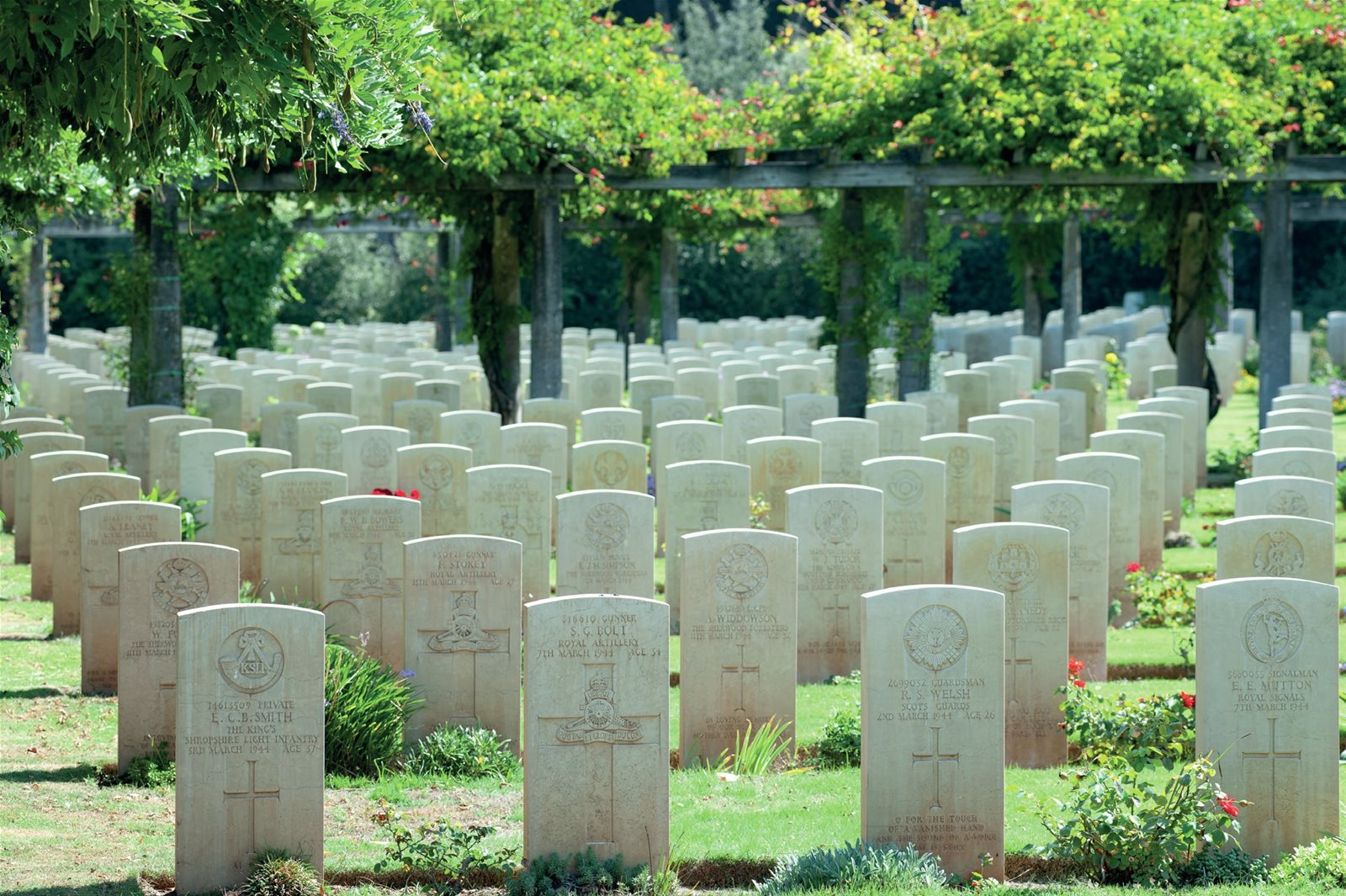
Commonwealth War Graves Commission cemetery, Anzio, at which 1,039 service personnel are remembered. Visit
www.cwgc.org to learn about cemeteries of interest to you.
For those of us with a deep personal connection to the Second World War, planning a research trip to the European battlefields is a powerful way of connecting with our family stories. And now, 80 years after VE Day, the growing availability of military records makes it a perfect time to follow in our parents’ and grandparents’ footsteps.
Documents including service records, casualty lists, unit diaries and maps can help us learn more about the courage and sacrifice of the “greatest generation”. And major commemorations such as the 80th anniversary of D-Day last year have spurred an increasing number of people to make pilgrimages to the battlefields. The Commonwealth War Graves Commission says visitor numbers at its Bayeux War Cemetery in Normandy saw more than 105,000 visitors last year.
Gary Weight, who runs Pegasus Battlefield Tours, says a quarter of his clients used to be Second World War veterans – but that figure is now taken up by relatives seeking to pay tribute to them.
“A veteran once said to me, ‘Please keep our stories alive’, and that in a nutshell is why I do what I do,” he continues.
Here is how you can use military records to plan your own VE Day 80 pilgrimage – or delve deeper into your military forebears’ story from the comfort of your own home.
First things first – start your journey at home: It’s often said that the best way to start your family history research is to begin with what you already know and that applies to researching relatives’ war service as well.
Buy a notebook and write down everything you remember about what your parents or grandparents told you about the war – noting any places, dates or incidents – and then speak to your siblings and cousins.
Although servicemen and women rarely spoke about the war, your family members might have been told different snippets of information that you can piece together like a jigsaw.
If you have been passed down medals or wartime photographs, or even letters or a diary, take them out of their boxes and lay them out on a table. Do they start to tell a story?
KEY TIP: If you have an old photograph of a soldier standing in front of a landmark, run it through Google Lens to try to identify where it was taken.
Think about the gaps in your knowledge and write down any questions you have, as they can provide useful avenues for further research. What would you most like to find out?
The key pieces of information you will need: The most important pieces of information are your relative’s date of birth and the name of their battalion, ship or squadron. Try to also find out their service number.
Once you know the name of their unit, you can begin your research online.
There is a lot of free information online about individual regiments – from official histories to Facebook groups and forums.
The Imperial War Museums and the National Army Museum have collections of artefacts including diaries and letters, while regimental museums will happily answer requests for help.
Personnel and unit records:
The Ministry of Defence is in the process of transferring 10 million personnel service records to The National Archives, Kew.
Around four million records had been transferred by last year – starting with non-officer Army records. Ancestry has been commissioned to digitise this first tranche.